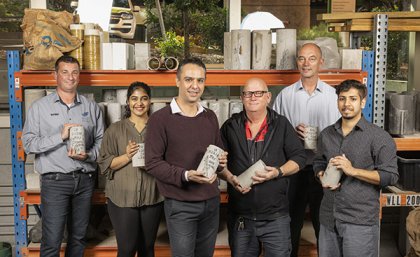
Crushed wine bottles and other recycled glass could replace sand in vital tunnelling supports, cutting construction costs and improving the sustainability of sand mining.
University of Queensland engineers are working on the second phase of an industry-sponsored project using crushed waste glass (CWG) to replace sand in shotcrete used to support tunnels and underground spaces.
Dr Mehdi Serati from UQ’s School of Civil Engineering said the amount of sand in the world was finite, so ingenuity was necessary to solve the problem of a looming shortage.
“If we don’t do something about sand depletion at a global scale, our grandchildren are not going to see sandy beaches,” Dr Serati said.
“Over the past 20 years the cost of sand has increased by six times, and it’s the second most consumed natural product globally, after fresh water.“
CWG is made up of recycled glass from wine bottles and other products, which are usually stockpiled or sent overseas for other countries to process and store as waste.
Dr Serati said CWG had a number of advantages as a potential replacement for sand.
“It’s a cheaper product because it’s using waste from one industry and turning it into treasure for another,” he said.
“It also uses less water, as glass has zero water absorption, so really there is a triple benefit in terms of conservation, cost and saving water.”
Results are positive after one year of testing with CWG showing promise as the next generation of sustainable material.



